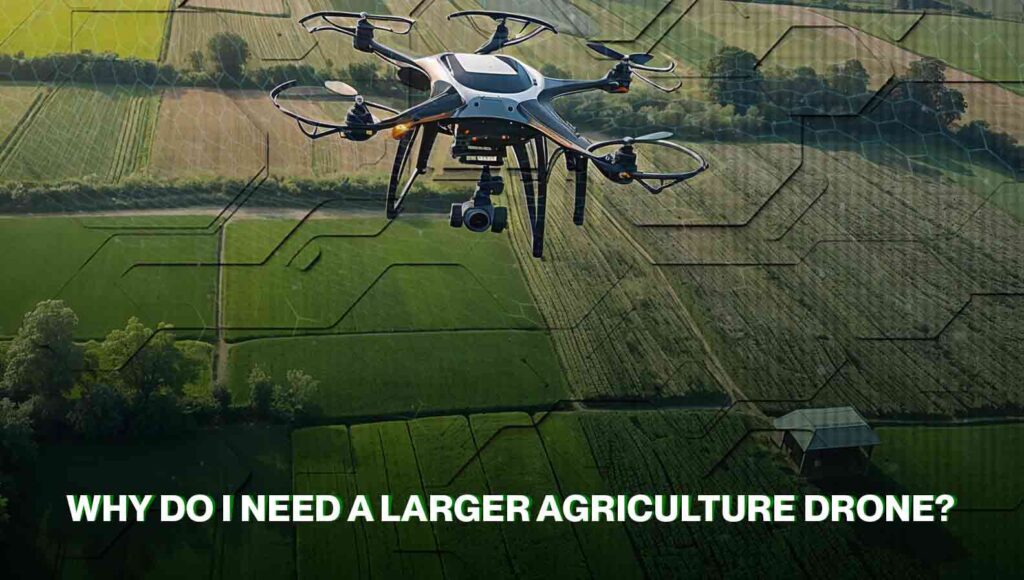
Why Do I Need a Larger Agriculture Drone?
One critical decision farmers face when considering the adoption of drone technology in agriculture is the size of the drone they need. While smaller drones offer certain advantages, larger agricultural drones provide a range of benefits that can significantly enhance farming operations.
Increased Payload Capacity: More Capability
One of the most significant advantages of larger agricultural drones is their increased payload capacity. These drones can carry heavier equipment, including advanced sensors, high-resolution cameras, and sprayers. This expanded capacity allows farmers to collect more comprehensive data and perform various tasks.
For instance, a more prominent drone equipped with multispectral sensors can gather detailed information on crop health, soil conditions, and moisture levels, providing farmers with the insights they need for effective decision-making. Additionally, larger drones can carry more substantial spraying equipment, enabling them to cover larger areas efficiently.
Enhanced Flight Time: Cover More Ground
Another critical benefit of larger drones is their enhanced flight time. Bigger drones typically come with larger batteries, allowing them to stay airborne longer. This extended flight time means farmers can cover larger land areas in one flight, improving operational efficiency.
For example, a farmer with a more prominent drone can survey multiple fields or complete extensive crop spraying tasks without frequently returning to the charging station. This efficiency translates to time savings and the ability to manage more extensive farming operations more effectively.
Better Stability and Control: Quality Results
Larger drones generally offer improved stability and control, especially in varying weather conditions. This stability is crucial for capturing high-quality aerial imagery and ensuring precise applications. In windy or turbulent environments, larger drones can maintain their position better than smaller counterparts, leading to more accurate data collection and application.
For instance, when monitoring crops, a stable flight enables the drone to capture clear images without blurring, allowing for accurate crop health analysis. Similarly, when spraying pesticides, stability ensures that the chemicals are applied precisely where needed, reducing waste and maximizing effectiveness.
Advanced Features: Cutting-Edge Technology
Many larger agricultural drones come equipped with advanced features that enhance their functionality. These features include higher-resolution cameras, advanced mapping capabilities, and automated flight planning. These enhancements allow for more detailed analysis and better decision-making regarding crop management.
For example, drones with advanced mapping capabilities can create detailed topographic maps of fields, helping farmers understand elevation and soil type variations. This information can guide planting strategies, irrigation planning, and soil management practices.
Scalability: Growing with Your Business
For farmers managing larger plots of land or those looking to expand, a more prominent drone provides the scalability needed to operate efficiently. As agricultural needs evolve, having a larger drone allows for flexibility in managing more significant areas without compromising performance.
Investing in a larger drone today can future-proof your operations. As farming demands increase, having a drone capable of handling larger workloads ensures you’re prepared for future challenges and opportunities.
Conclusion: Making the Right Choice
While smaller drones may be suitable for specific applications, larger agricultural drones offer a range of features and benefits that can significantly enhance farming operations. Consider your specific needs and objectives to determine if a larger drone is the right choice for your agricultural business.
In summary, larger agricultural drones provide increased payload capacity, enhanced flight time, better stability, advanced features, and scalability—making them a valuable investment for modern farmers. Embracing drone technology can improve efficiency, productivity, and profitability in an increasingly competitive agricultural landscape.

